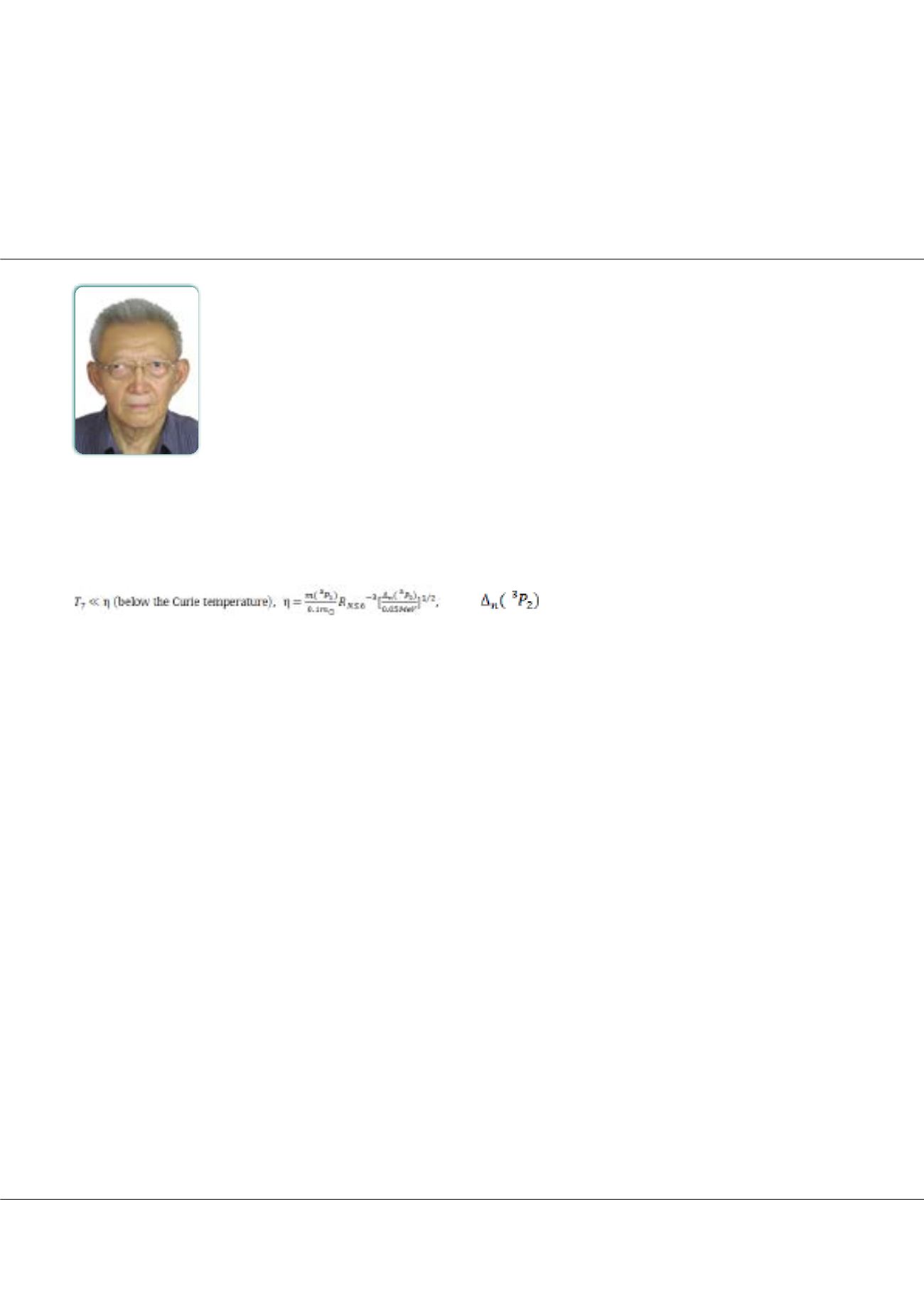

Page 21
Research & Reviews: Journal of Material Sciences | ISSN: 2321-6212 | Volume 6
Theoretical, Materials and Condensed Matter Physics
5
th
International Conference on
November 26-28, 2018 | Los Angeles, USA
Magnetars by condensed matter physics
1. We present the microscopic origin of the super-strong magnetic fields in magnetars. The ultra-strong magnetic field of the
magnetars originates really from the induced paramagnetic moment of the
3
P
2
superfluid with a significant mass more than
0.1m
⊙
in a condition when their interior temperature
here is the energy gap of the neutron
3
P
2
Cooper
pairs. In the case, a phase transition from paramagnetism to ferromagnetism due to the induced paramagnetic moment of
3
P
2
Cooper pairs in the presence of background magnetic field.
The upper limit of the magnetic field for the magnetars is
2. We find that the electron Fermi energy,
E
f
(e)
, increases with the magnetic field strength and it is proportional to
B
1/4
under
the super strong magnetic field. We note that this result is exactly the opposite of the popular idea that the electron Fermi
energy decreases with the magnetic field. The key reason for the dilemma is that an incorrect formulae of the microscopic
number of states for the electrons in the intense magnetic field from some internationally well known popular textbooks on
statistical physics has been repeatedly quoted by many authors. An important inference from our idea is the direct Urca process
is permitted in the magnetars.
3. We propose a new mechanism for the production of the high soft X-ray luminosities of magnetars. In particular, the Fermi
energy of the electrons is higher than 60MeV in ultra-strong magnetic fields, B>>B
cr
(=4.414
×
10
13
gauss), which is much higher
than the Fermi energy of the neutrons. In this case, the process of electron capture (EC) by protons around the proton Femi
surface would dominate in magnetars. The outgoing high-energy neutrons due to EC process can easily destroy the
3
P
2
Cooper
pairs through the nuclear strong interaction. When one Cooper pair is destroyed, the orderly magnetic energy 2
μn
B would
be released and transformed into disorder thermal energy, then it may be radiated as soft X-rays. The Energy is in the X-ray
range. The total magnetic energy of
3
P
2
Cooper pairs can be estimated as 1.0×
10
47
B
15
(m(
3
P
2
)/0.1m
⊙
)ergs
. This energy can
maintain over
4 6
10
−
yrs
for
L
X
≈ 10
34
-10
36
ergs/s
. We have also calculated the theoretical luminosities of magnetars, and our
results compared very well with observations of magnetars.
Biography
Qiu-he Peng graduated from Department of Astronomy, Nanjing University at 1960 firstly taught at Peking University for 18 years and then is teaching at Nanjing
University. He is mainly engaged in nuclear astrophysics, particle astrophysics, and galactic astronomy research. In the field of nuclear astrophysics, his researches
involve neutron stars (pulsars), the supernova explosion mechanism and the thermonuclear reaction inside the star, the synthesis of heavy elements and an
interstellar radioactive element such as the origin of celestial 26Al. 225 papers of him have been published.
qhpeng@nju.edu.cnQiu-he Peng
Nanjing University, China
Qiu-he Peng, Res. Rev. J Mat. Sci. 2018, Volume 6
DOI: 10.4172/2321-6212-C10-040
( ) 3
14
max 2
( ) 2.02 10
in
B P
gauss
η
≈ ×
















